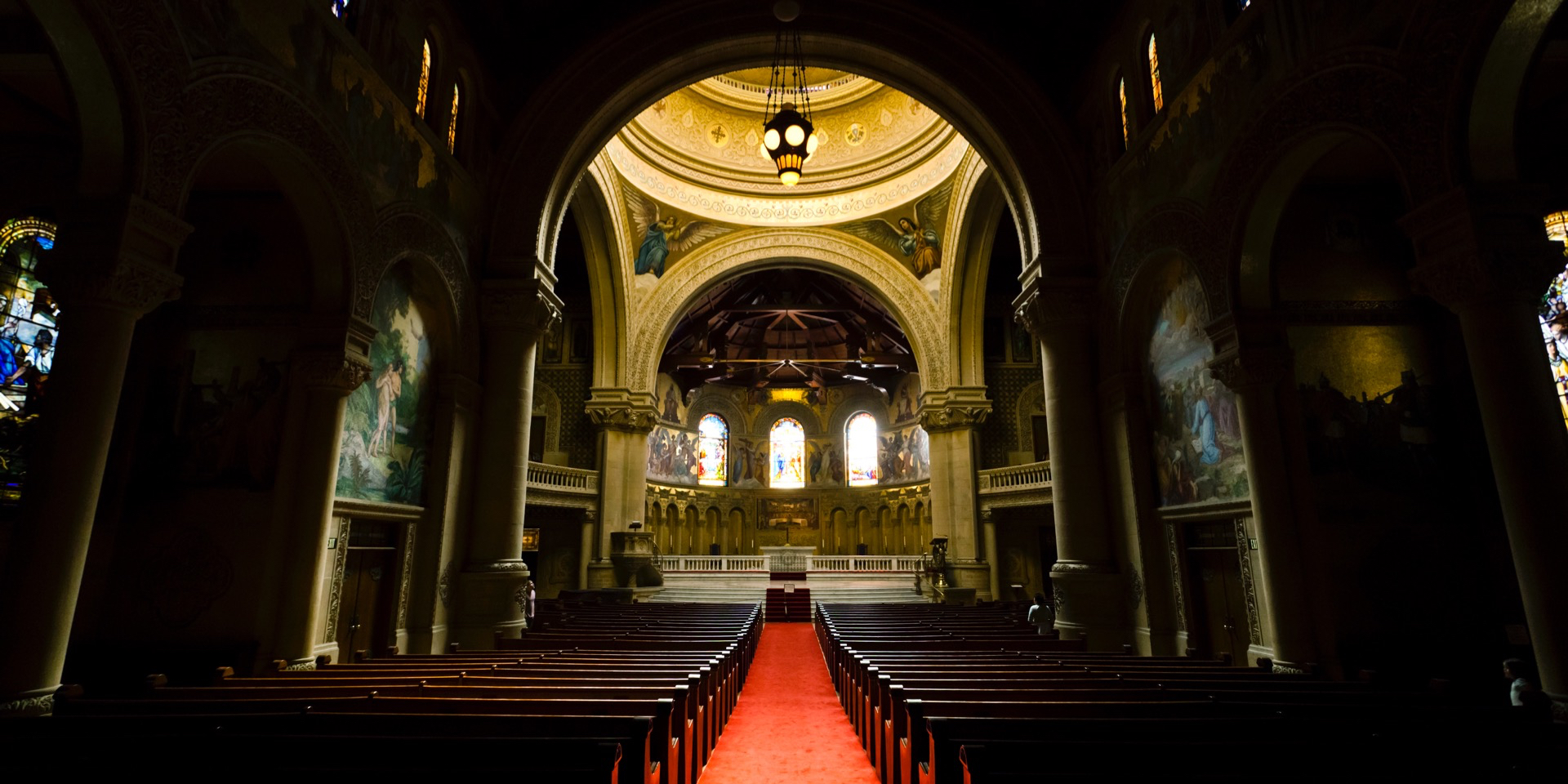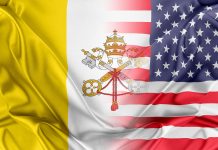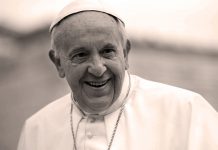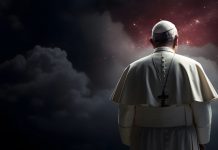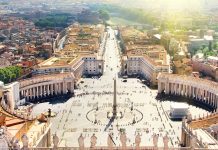“There are no other two churches in the world today that are so similar yet, at the same time, so opposite as the Eastern, or Greek, and the Western, or Roman Church” (Philip Schaff).
Rejoicing over the conversion to Christianity of the pagan emperor Constantine, the Christian leaders of the 4th century did not suspect that one of the measures taken by him would lead to Christianity being split in two. In 330, Constantine the Great moved the capital of the empire from Rome to Byzantium, a city that became known as Constantinople. Here, on Saturday, July 16, 1054, the following words were heard: “May God see and judge.” They were the last words spoken by the papal legate before leaving the St. Sofia Cathedral. The moment marked the Great Schism between the Orthodox and the Catholic Church.
The causes of the schism
The occasion was the culmination of centuries of built-up tension between eastern and western Christianity. After the move of the imperial capital, the Christian Church had two poles, Rome and Constantinople, between which differences of perspectives appeared, some very acute. The crucial aspect was the identity and role of the Church: “Rome followed the logic of a universal Church centered on its primacy. […] In the East, on the contrary, Christianity developed from the beginning in various regional and very ancient cultures […] it was the idea of a Church of the Empire, ecumenical in that sense.”[1]
The great historian of Christianity Philip Schaff lists three major causes of the “secret of the ultimate separation and incurable antagonism of” the two churches: 1) the political-ecclesiastical rivalry between the Eastern patriarch, who had the support of the Byzantine Empire, and the pope, who had ties to the new German Empire; 2) the growing influence of the papacy in the Western Church; 3) the stationary nature of the Eastern Church compared to the progressive nature of the Western Church.
Exchanging anathema
In the year 1053, the patriarch of Constantinople sent a letter to a church in southern Italy, which belonged to the East, and to the Frankish bishops, the monks of the region, including the pope. In it, Michael Cerularius accused them of following Jewish practices, such as the use of unleavened bread for the liturgy, that they fasted on Saturdays[2] during Lent, ate strangled animals, and did not sing “hallelujah” during the fast.
In early 1054, Pope Leo IX sent Cardinal Humbert to Constantinople with a very long letter (41 chapters). This reply contained several accusations, such as the fact that the Greeks allowed their priests to marry or that they rebaptized the Latins. The central aspect, however, was authority. Quoting the Donation of Constantine[3], the pope affirmed the primacy of the papal seat before the other patriarchates, in the context in which Cerularius had assumed the title of “ecumenical” patriarch.
The papal delegation arrived in Constantinople and was received at the imperial palace. Although there was a debate in the presence of the emperor, this took place in the absence of Cerularius, who was offended by the attitude of the Latins and the content of the letter. In the end, on July 16 the pope’s delegates deposited on the altar of the St. Sofia Cathedral the papal bull and announced the excommunication. Cerularius quickly responded (July 24) with a counter-anathema, in turn making an accusation of the Filioque heresy[4] and several Western practices: bishops wore jewellery and were engaged in wars, baptism was done by a single immersion, icons and relics were not adored. Within a short period of time, the patriarchs of Alexandria, Antioch, and Jerusalem had come to adhere to the position of Constantinople and the camps were clearly defined.
An endless history
Analysing the time of the schism and the following centuries, Schaff writes: “In this period (1049-1294) the [Roman] Church and the papacy ascend from the lowest state of weakness and corruption to the highest power and influence over the nations of Europe.”[5] Moments such as the affirmation of the infallibility of the pope or the impossibility of judging the pope by another authority (see the dethronement and humiliation of Henry IV) come from the same period.
In contrast, the East closed itself up within its borders. With an increasingly vigorous Mohammedanism in the area, but excommunicated by Rome and threatened by the Crusades, “the Greeks began to think: Better the turban than the tiara! Anything rather than Rome.”[6] Schaff also notes the fact that the Eastern patriarchs regarded the pope as “the greatest heretic of the last days.” The tension reached dramatic moments: “Where the two churches meet in the closest proximity, on issues related to the place of the Savior’s birth or tomb, in Bethlehem or Jerusalem, they hate each other in the deepest way, and their ignorant and bigoted monks must be guarded by Mohammedan soldiers so that they do not clash violently.”[7]
The two churches pursued their course independently for hundreds of years. The 19th century brought two other great barriers: Catholics proclaimed the Immaculate Conception of the Virgin Mary (1854) and, later, papal infallibility (1870). Schaff notes that, although invited to the First Vatican Council (1868), the Orthodox patriarchs “indignantly refused, renewing their old protests against the antichrist usurpation of the papacy and the Filioque heresy.”
At the second council, however, in 1964, Pope Paul VI and Patriarch Athenagoras I lifted mutual anathemas. On December 7, 1965, a joint declaration[8] was read in the Vatican and Istanbul, recognising the excesses that accompanied the events of the Schism and the consequences unforeseen by their initiators. The two leaders jointly confessed that they “regret the offensive words, the reproaches without foundation, and the reprehensible gestures.” The measure did not put an end to the schism, but demonstrated a desire for dialogue and reconciliation.
Utopia of unity or schismatic truth?
Regarding the schism, we can legitimately ask whether it is personal pride or a supreme truth worth fighting, resisting and dying for. Each side claims to be right and regrets the consequences, which are still being felt today. Unification would be the ideal solution, but if it were to be done at any cost then it would have no value.
“As we have mentioned several times in this book, conflict and controversy characterize any living religion, (…) Some people see this proliferation of denominations as tragic, as a betrayal of the essential unity of Christianity. One can wonder, however, whether there ever was the kind of unity that some people project into the distant past. Christians have always argued heatedly over important issues (…).”[9]
A thousand years after the Great Schism, we know that it was not just a matter of miscommunication, but of essential things. It would obviously be unprofitable for another thousand years to pass for the reunification of the churches—especially since, as long as the two big sister churches are not reconciled, they cannot claim the same for the smaller churches either. So, for the fulfilment of the “one flock and one Shepherd” ideal, probably the best solution would be to take to heart another biblical text, often used by historians when approaching ecclesiastical struggles. The camps that long for supremacy should confirm the words of Jesus Christ: “My kingdom is not of this world.”












